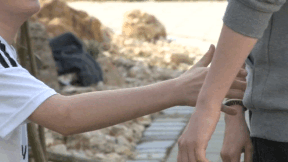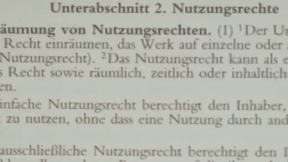 History
History


4671644 / 5561468
Battle of the Nations
War of Liberation against Napoleon
From 16th to 19th October 1813 the allies Austria, Prussia, Russia and Sweden inflicted the decisive defeat on the French army, thus breaking the supremacy of Napoleon over Europe. In the first mass combat in modern times more than half a million soldiers from all parts of Europe fought for the political future and the territorial division of the continent. The Battle of the Nations went down in history as the biggest and bloodiest battle until the First World War. The film tells the story of this crushing blow to Napoleon. With exciting footage, filmed during the historical re-enactment of the Battle on the occasion of its 200th anniversary, and numerous interviews history is brought to life again. Together with the extensive teaching material in the data section the DVD is perfectly suited for use in the classroom.
Play trailer

Curriculum-centred and oriented towards educational standards
Matching
Podcasting
Today, the use of new media has become a matter of course not only in everyday life – schools and teaching, too, benefit from the new technologies and methods, which support active and independent learning. Especially in computer science, ethics and language courses but also in all other subjects, modern media are a valuable pedagogic and didactic asset. This DVD uses the example of podcasts to demonstrate how the possibilities opened up by new media can be applied in the classroom and how the pupils can be taught to handle them in a competent and target-oriented manner. The film is aimed at supporting the use of podcasts at school and encourages making them. This also requires the ability to find information on the Internet and assess it. The film informs on the functionality of podcasts and technical background as well as on the teaching and learning possibilities offered by podcasts – ranging from specific contents to superordinate learning targets such as the advancement of creativity and team spirit. The DVD is a useful support for teachers applying new media and wishing to show their pupils how to handle Running Time: 20:29 ms them in a sensible way.
Copyright
Copyright is subject to constant change to keep up with technological advances. This film enables the viewer to grasp the basic principles of this extremely intricate matter. By way of introduction, the film defines what an author is, what kinds of works there are and how long a work is protected on principle. Then the fundamental rights of an author are cited and it is shown how these are exploited in our times. In the third chapter, the respective rights are illustrated by way of practice-oriented examples of books, photos, music and films. Here, of course, an emphasis is laid on the field of education, taking into account the latest case law within the EU and Austria in particular. A further chapter highlights the problems arising with the Internet and goes into the citation law and pirate copies. All in all, in this way the viewer is made familiar with the most important basic terms and their meanings. Comprehensive worksheets and additional accompanying material invite us to deepen our knowledge of the subject.









